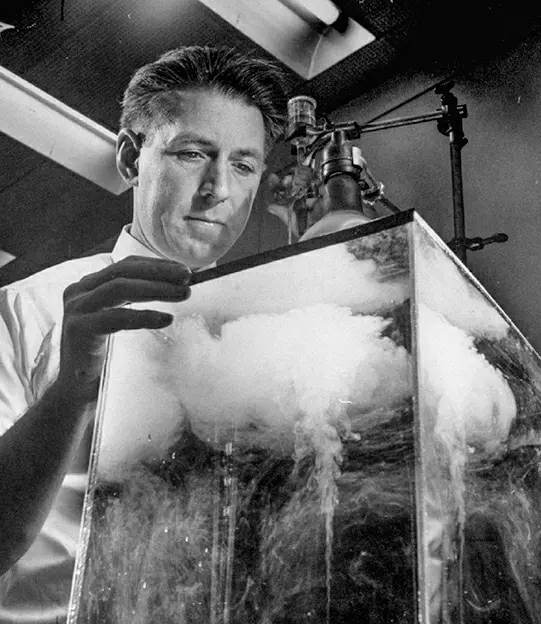Cloud seeding, a groundbreaking technique for weather modification, originated from the pioneering work of American chemists and meteorologists Vincent Schaefer and Bernard Vonnegut in the mid-20th century. The concept of human-induced weather control, which seemed like a feat reserved for mythological beings, became a scientific reality through their experiments.
In 1946, Schaefer, while working at General Electric Laboratories, accidentally discovered that introducing dry ice into supercooled water vapor could induce rain droplet formation. This led to the first successful man-made snowfall experiment over the Berkshire Mountains in Massachusetts. Schaefer’s colleague, Bernard Vonnegut (the older brother of novelist Kurt Vonnegut Jr.), expanded upon this discovery, finding that other substances like silver iodide could also act as nucleation sites to seed clouds for precipitation.
The discovery that even common table salt could be used for cloud seeding further demystified the process. In nature, similar effects are often produced by fine particles of dust or ice. Schaefer and Vonnegut’s work quickly captured the interest of commercial entities and governments, leading to the application of cloud seeding in various parts of the world, particularly in arid regions and during droughts. One notable example is the United Arab Emirates, where cloud seeding is employed to generate artificial rainfall in desert areas like Dubai and Abu Dhabi.

